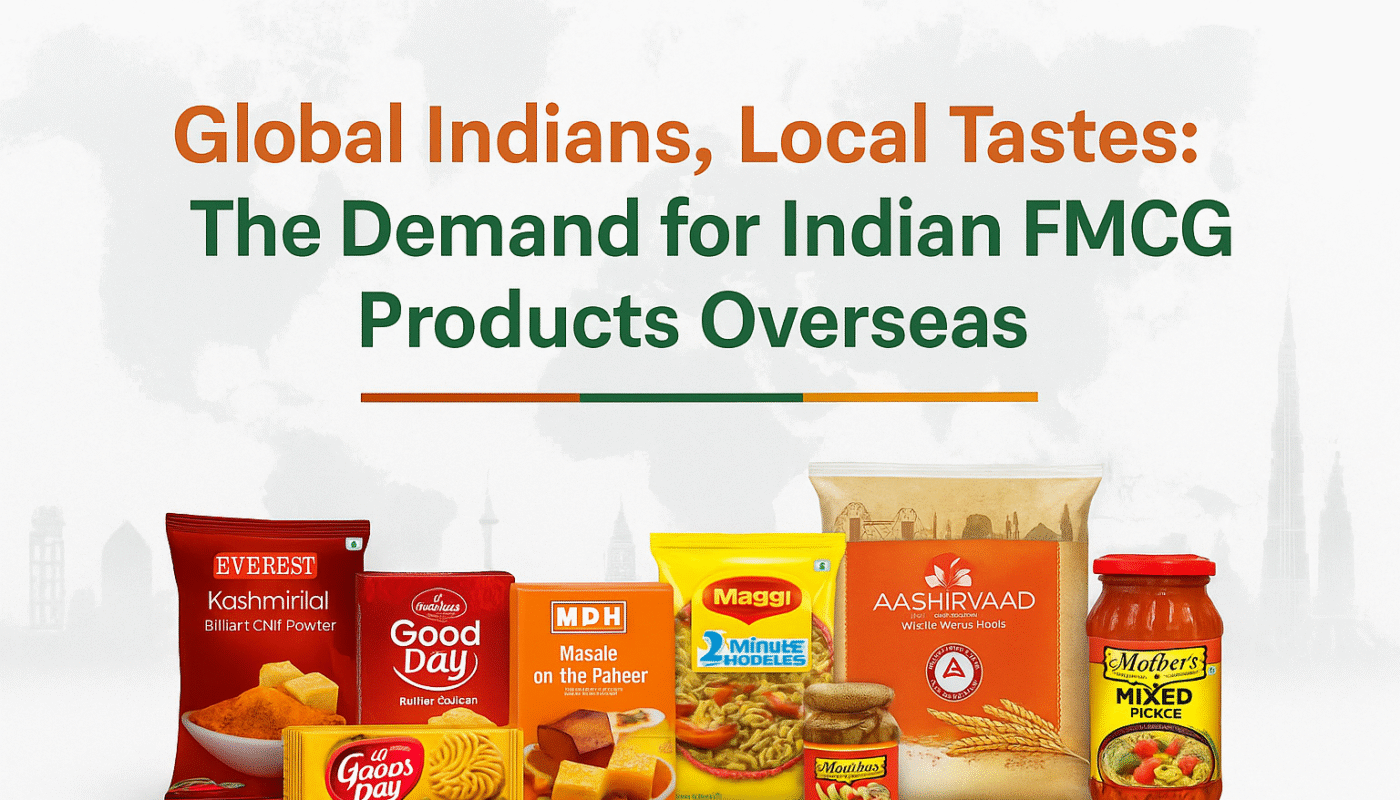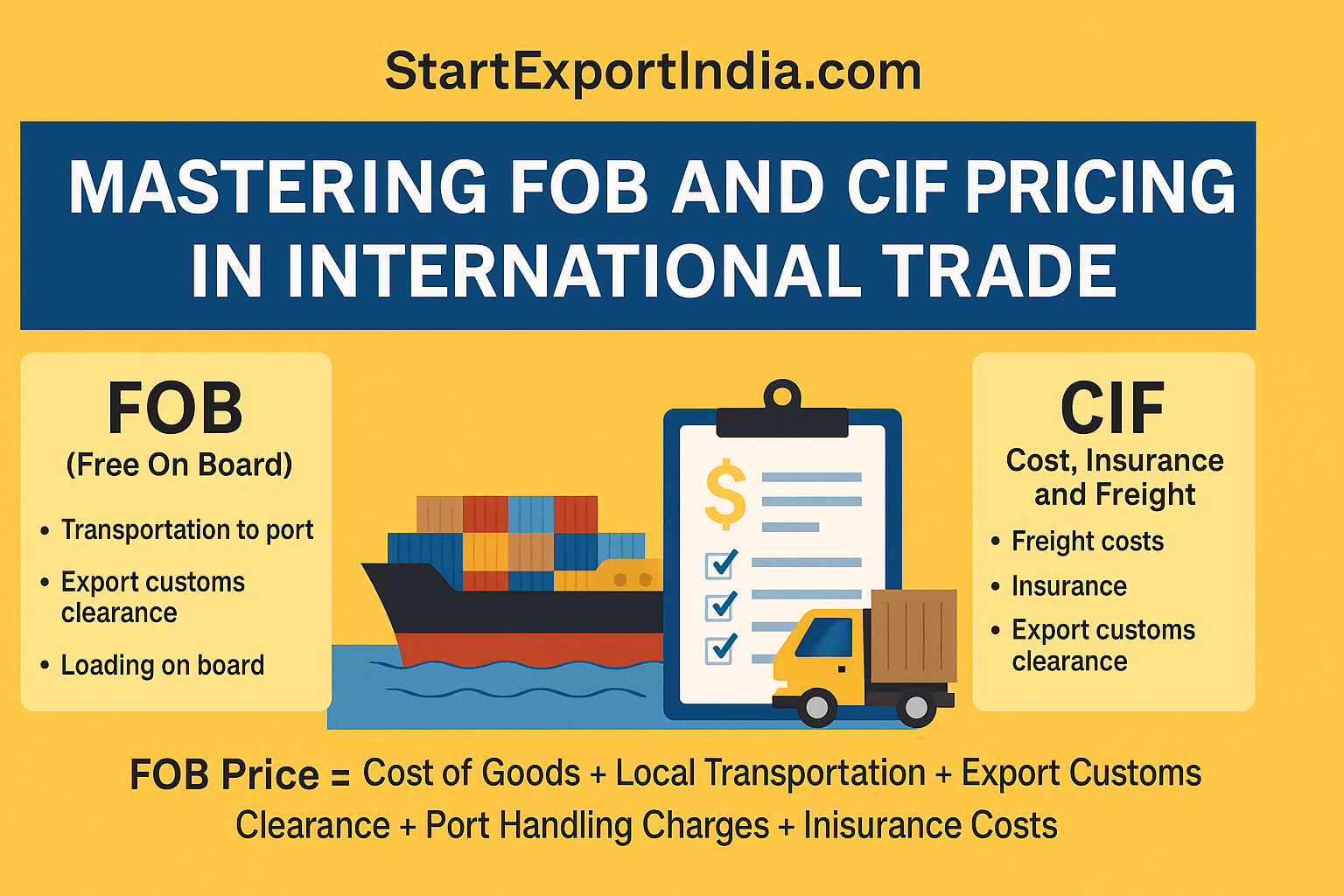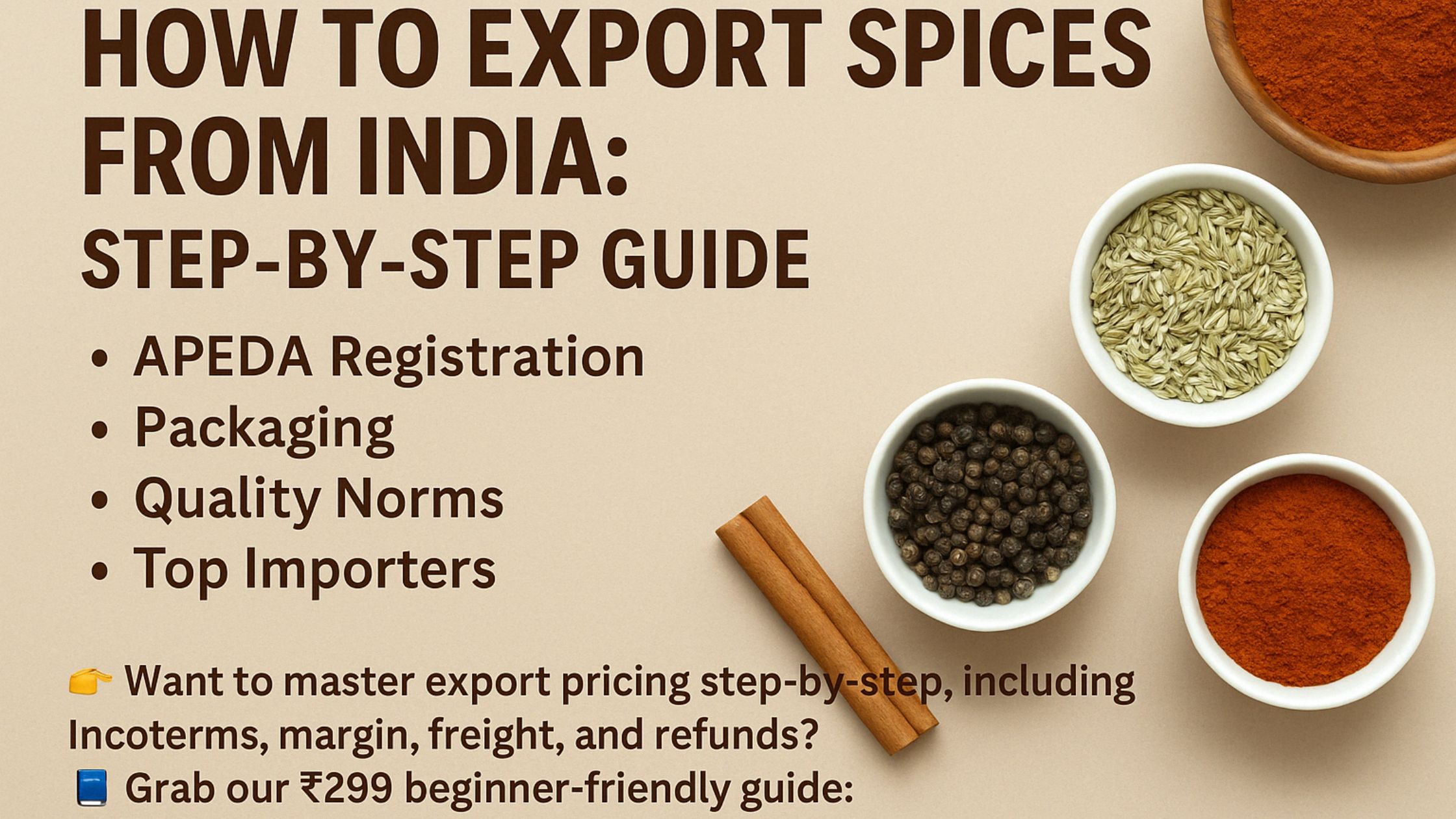- Introduction
- Section 1: Understanding the Indian FMCG Landscape
- Section 2: The Emotional Connect — Nostalgia and Familiarity
- Section 3: Growing Global Demand — Market Drivers
- Section 4: Popular Indian FMCG Categories Abroad
- Section 5: Distribution Channels Supporting Indian FMCG Abroad
- Section 6: Challenges for Indian FMCG Abroad
- Section 7: Opportunities for Indian Exporters
- Conclusion
- FAQs: Indian FMCG Products for Indians Abroad
Introduction
India’s FMCG (Fast-Moving Consumer Goods) sector has long been the backbone of everyday consumption for millions of Indians. From quick snacks and traditional spices to personal care products steeped in Ayurveda, Indian FMCG brands have become an inseparable part of daily life. But their influence does not end at India’s borders.
As India’s diaspora has grown — now estimated at over 30 million people worldwide — so has the demand for these familiar brands and products. For Indians living abroad, FMCG goods from home offer more than just convenience; they provide a sense of belonging, cultural identity, and connection to their roots. Whether it’s a comforting cup of Masala chai, a trusted brand of hair oil, or the spices that make a curry taste like home, Indian FMCG products are a bridge between life abroad and memories of India.
In this blog, we’ll explore how Indian FMCG products are serving the needs of Global Indians, the emotional and cultural drivers behind their popularity, the challenges exporters face, and the incredible opportunities this market offers.
Section 1: Understanding the Indian FMCG Landscape
India’s FMCG industry is one of the largest and fastest-growing sectors in the country, valued at billions of dollars and expanding rapidly thanks to a massive domestic market and a vibrant supply chain. FMCG refers to products with a relatively short shelf life and high turnover — think packaged foods, beverages, personal care items, and household goods.
Indian FMCG brands have earned trust over generations, known for their affordability, cultural relevance, and deep-rooted connection to Indian lifestyles. From the humble Parle-G biscuit to the age-old Dabur Chyawanprash, these products have become cultural icons in their own right. Their appeal is not only due to their functionality but also to the emotional associations they carry — many Indian consumers grew up with these brands as part of their daily routine.
In recent years, Indian FMCG manufacturers have also focused on modernization, improving quality, packaging, and compliance with international standards. This transformation has made them more competitive on a global stage, helping them cater to Indians living abroad and even to non-Indian consumers interested in Indian culture, cuisine, and wellness traditions.
With a strong base of recognizable brands and a product range spanning food, wellness, household care, and personal grooming, India’s FMCG landscape is well-positioned to meet the growing demand from global Indian communities.
Section 2: The Emotional Connect — Nostalgia and Familiarity
For Indians living abroad, everyday products from India are far more than mere commodities — they are powerful emotional anchors. A packet of Haldiram’s namkeen, the familiar fragrance of Parachute coconut oil, or the taste of homemade sambar made with MTR masala — these are not just products, but vivid memories of home.
When people migrate, they often miss the everyday experiences that defined their lives in India: family meals, festival celebrations, familiar tastes and scents. Indian FMCG products help fill this void. They act as cultural touchstones, preserving ties to tradition and offering comfort in a foreign land.
Take, for instance, Maggi noodles — a quick-fix snack that resonates with college students and busy professionals alike. Or MDH masalas, whose jingles and flavors instantly spark memories of home-cooked meals. These products evoke a sense of nostalgia, transporting NRIs (Non-Resident Indians) and PIOs (Persons of Indian Origin) back to the kitchens, conversations, and rituals of their childhood.
In many ways, these FMCG products do what no video call or WhatsApp message can achieve — they physically recreate the feel of “home” and reinforce identity, pride, and belonging among the Indian diaspora.
Section 3: Growing Global Demand — Market Drivers
The demand for Indian FMCG products among overseas Indians has seen a remarkable surge over the last decade. Several factors are driving this upward trend:
✅ Rising Indian diaspora populations
With more than 30 million Indians living abroad, the global demand for products that cater to their tastes and lifestyles is only growing. Countries like the United States, the United Kingdom, Canada, Australia, and the UAE host large Indian communities who maintain strong links to their roots.
✅ Higher disposable incomes among NRIs
Many Indians abroad enjoy greater purchasing power compared to their counterparts in India. This allows them to continue buying their favorite brands from home, even if they come at a premium price overseas.
✅ Ethnic grocery stores and online marketplaces
The rise of Indian and South Asian grocery stores in global cities has made it easier to access authentic Indian FMCG products. Additionally, e-commerce platforms specializing in ethnic foods have made buying Indian groceries online fast, convenient, and affordable.
✅ Cultural events and community networks
Indian restaurants, community festivals, and events such as Diwali melas or Holi celebrations further boost demand for Indian FMCG products. These gatherings reinforce cultural ties and introduce second-generation Indians to authentic products from home.
✅ Global curiosity about Indian products
Yoga, Ayurveda, Indian cuisine — these elements of Indian culture are gaining popularity around the world. As a result, even non-Indians are beginning to try Indian FMCG products, drawn by their unique flavors and natural ingredients.
Together, these drivers ensure that Indian FMCG products are not just surviving, but thriving in international markets.
Section 4: Popular Indian FMCG Categories Abroad
Indian FMCG brands have managed to capture the hearts — and shopping carts — of Global Indians through a wide range of product categories. Here are some of the most popular among the diaspora:
✅ Packaged Foods
Ready-to-eat curries, instant mixes, frozen snacks, and traditional sweets have a strong following. Brands like MTR, Haldiram’s, and ITC provide easy ways to recreate familiar meals abroad.
✅ Spices & Condiments
Perhaps no category is as important to an Indian kitchen as spices. From MDH spice blends to Everest masalas and pickles by Mother’s Recipe, these products are irreplaceable in helping overseas Indians cook authentic Indian meals.
✅ Personal Care Products
Ayurvedic and herbal personal care items have gained a loyal customer base. Brands like Dabur, Himalaya, and Patanjali offer everything from hair oils to toothpaste, merging traditional wisdom with modern needs.
✅ Beverages
India’s famous tea blends — think Tata Tea, Red Label, Wagh Bakri — and instant coffee like Bru or Nescafé have become household names in NRI communities. Ready-to-mix drinks such as Rooh Afza also enjoy popularity.
✅ Household & Home Care
Basic everyday needs like detergents (e.g., Nirma, Surf Excel) and soaps (e.g., Medimix, Santoor) also find demand, thanks to their familiarity and effectiveness.
✅ Health Supplements
Products like Dabur Chyawanprash, herbal immunity boosters, and Ayurvedic tonics resonate with Indians abroad who value traditional wellness practices.
These categories highlight how Indian FMCG products do more than satisfy a craving — they help overseas Indians preserve their cultural heritage and daily rituals.
Section 5: Distribution Channels Supporting Indian FMCG Abroad
Indian FMCG products are now more accessible than ever to the global Indian community, thanks to well-developed and diverse distribution channels. Let’s explore how these products reach overseas consumers:
✅ Ethnic Indian Grocery Stores
Traditional “desi stores” remain the backbone of Indian FMCG distribution abroad. They stock everything from fresh produce to spice mixes, snacks, and personal care products, creating a familiar shopping environment for Indians overseas.
✅ Mainstream Supermarkets
Big retail chains in the US, UK, Canada, Australia, and the Middle East increasingly allocate shelf space to Indian products. Stores like Tesco, Walmart, and Carrefour often carry popular Indian brands, responding to growing demand.
✅ Online Marketplaces
E-commerce has revolutionized the accessibility of Indian FMCG. Websites and apps specializing in ethnic groceries — such as Patel Brothers, Indian Grocery Store Online, or iShopIndian — offer a wide range of products with quick delivery, even to remote areas.
✅ Importers and Distributors
Established distribution companies specialize in importing Indian FMCG products, ensuring they meet local labeling, certification, and food safety regulations before reaching store shelves.
✅ Community Events and Cultural Fairs
Temporary stalls at Indian festivals, fairs, and cultural events also act as distribution channels, allowing people to sample and purchase their favorite products in a festive atmosphere.
Together, these channels create a robust ecosystem, ensuring that no matter where Indians settle around the globe, a piece of home is never too far away.
Section 6: Challenges for Indian FMCG Abroad
While the demand for Indian FMCG products overseas is strong, exporters and distributors still face several challenges when serving these markets:
✅ Regulatory Hurdles
Each country has its own stringent regulations regarding food safety, labeling, ingredients, and permissible additives. Indian brands must invest in compliance and certifications to avoid legal complications and maintain consumer trust.
✅ Logistics and Shipping
Exporting FMCG products, especially perishable or fragile items, can be costly and complicated. Ensuring freshness, timely delivery, and minimizing damage during transit is a continuous challenge.
✅ Competition
Besides competing with local brands, Indian products also face rivalry from other South Asian products (like Pakistani, Sri Lankan, or Bangladeshi brands) that might offer similar flavors and pricing.
✅ Price Sensitivity
While many NRIs are willing to pay a premium, there is still a threshold beyond which they may switch to local alternatives or competitors. Maintaining competitive pricing while managing overseas costs is crucial.
✅ Maintaining Authenticity
Some products can lose their authentic flavor, aroma, or texture due to long storage times, packaging constraints, or preservation requirements needed for export. This can dilute the “real” Indian experience that diaspora consumers crave.
✅ Brand Awareness
Newer or smaller FMCG brands often struggle to build brand recall in foreign markets, requiring marketing partnerships and community outreach to win over consumers.
Addressing these challenges calls for a thoughtful export strategy, robust quality control, and a deep understanding of diaspora preferences.
Section 7: Opportunities for Indian Exporters
Despite the challenges, the international market for Indian FMCG products is full of opportunities waiting to be tapped. Here’s how exporters can make the most of them:
✅ Health-Conscious Consumers
There is growing demand among NRIs and even non-Indian consumers for healthier, organic, gluten-free, and vegan options. Indian brands can expand product lines to cater to this niche, leveraging Ayurveda and traditional herbal knowledge.
✅ Innovative Packaging
Modern, tamper-proof, and eco-friendly packaging with longer shelf life can make products more appealing and suitable for export. Smart labeling in the local language can also boost consumer confidence.
✅ Mainstream Market Penetration
Indian products no longer have to stay confined to ethnic stores. With the popularity of yoga, Indian cuisine, and Ayurveda, these products can be positioned for a wider audience through mainstream supermarkets and health stores.
✅ Brand Storytelling
Sharing the story behind traditional products — how they’re made, their cultural significance, their health benefits — can create powerful marketing appeal and differentiate Indian FMCG products from competitors.
✅ Government Support
Indian exporters can leverage various government schemes and export incentives, such as the Remission of Duties and Taxes on Exported Products (RoDTEP) or Market Access Initiative (MAI) schemes, to improve competitiveness.
✅ Strategic Partnerships
Forming alliances with international distributors, logistic partners, and even local influencers can boost brand reach and ensure smoother entry into overseas markets.
By embracing these opportunities, Indian FMCG exporters can strengthen their global footprint while helping the Indian diaspora stay connected to their cultural heritage.
Conclusion
For millions of Indians living abroad, Indian FMCG products represent far more than daily necessities — they symbolize belonging, tradition, and a comforting connection to their roots. Whether it’s the masala that recreates a grandmother’s curry, the soap that brings back memories of home, or the snack that was a childhood favorite, these products keep the essence of India alive across continents.
The robust demand for Indian FMCG items among overseas Indians has created an exciting, expanding opportunity for Indian exporters. By adapting to global regulations, innovating in packaging and health-oriented product lines, and tapping into both ethnic and mainstream channels, Indian brands can thrive in the worldwide market.
As India’s influence grows globally, so too will its cultural exports. Indian FMCG products stand at the forefront of this trend, ready to serve not only the Indian diaspora but also a broader global audience eager for authentic, quality products with a rich story to tell.
👉 Call-to-Action (CTA):
Want to explore how to start exporting Indian FMCG products? Check out our free resources, guides, and expert tips at StartExportIndia.com and turn your export dreams into a thriving business!
FAQs: Indian FMCG Products for Indians Abroad
Q1. What are Indian FMCG products?
Indian FMCG (Fast-Moving Consumer Goods) products include items like packaged foods, snacks, spices, personal care items, and household products that are used frequently and bought regularly.
Q2. Why are Indian FMCG products so popular among NRIs?
Indian FMCG products help overseas Indians maintain cultural ties, enjoy familiar tastes and routines, and feel connected to their roots. They also offer a sense of nostalgia and comfort in a foreign environment.
Q3. Where can I buy Indian FMCG products abroad?
You can find them at Indian ethnic grocery stores, major supermarket chains with international food sections, or online marketplaces specializing in Indian groceries.
Q4. Are Indian FMCG products available on Amazon or other online stores?
Yes! Many Indian brands have expanded their distribution to global e-commerce platforms, making it easier for overseas Indians to buy their favorite products with home delivery.
Q5. Which Indian FMCG brands are most in demand overseas?
Popular brands include Haldiram’s, Maggi, Parle, Amul, Dabur, Himalaya, MDH, and Patanjali, among others. These brands offer a wide range of food, beverages, spices, and personal care items.
Q6. Is there a market for Indian FMCG products beyond the Indian diaspora?
Absolutely. Non-Indians are increasingly interested in Indian foods, spices, Ayurvedic products, and natural personal care items thanks to growing global awareness of Indian culture and wellness practices.
Q7. What challenges do exporters of Indian FMCG products face?
Exporters need to handle regulatory requirements, shipping and logistics challenges, competition from other brands, and pricing expectations, while maintaining authenticity and freshness of products.



